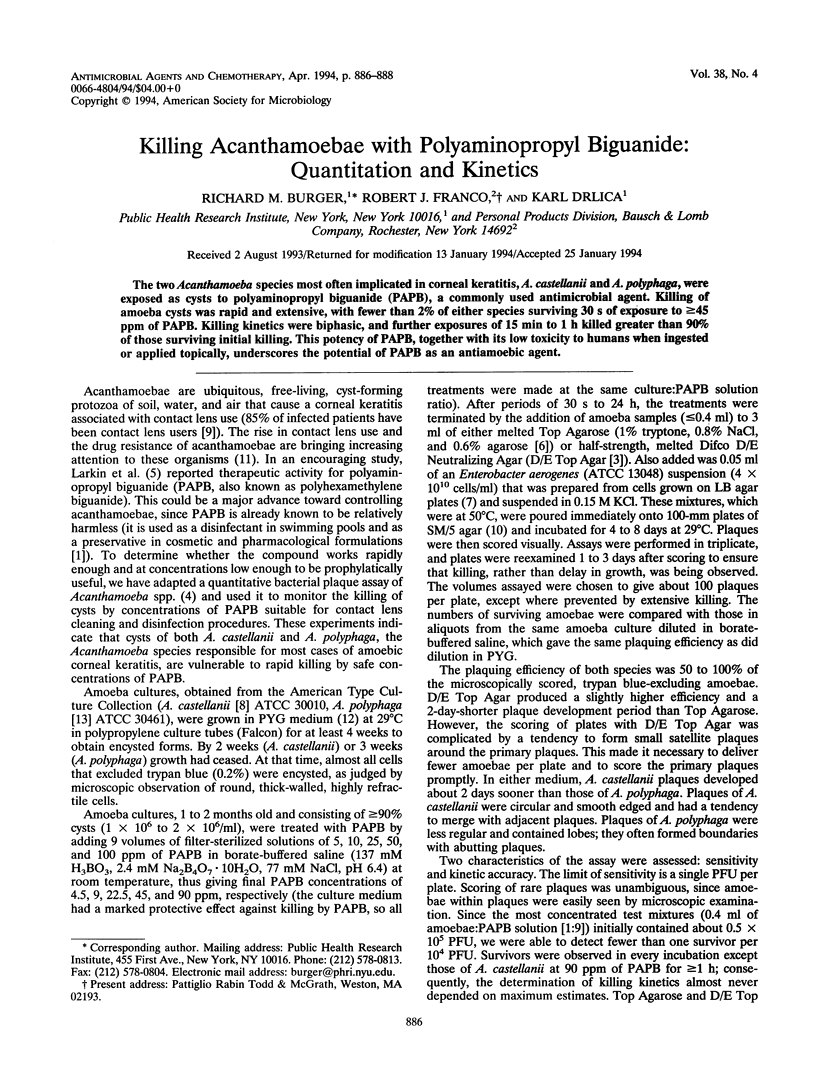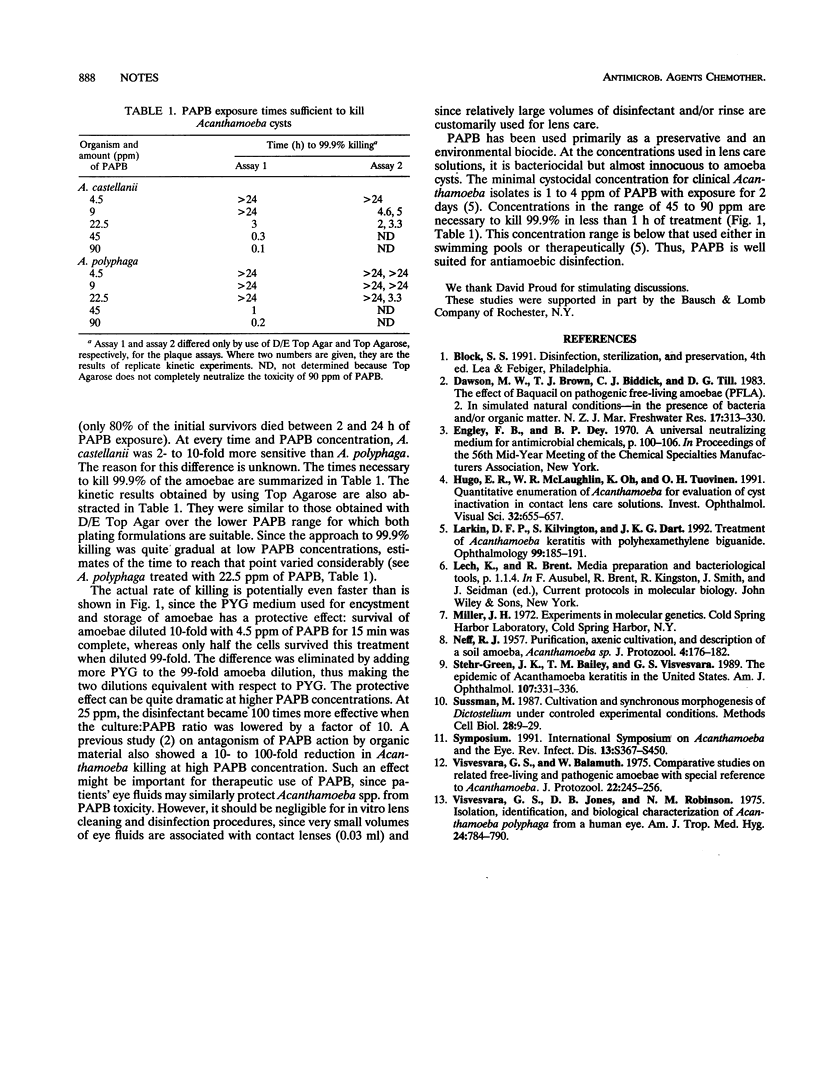Abstract
The two Acanthamoeba species most often implicated in corneal keratitis, A. castellanii and A. polyphaga, were exposed as cysts to polyaminopropyl biguanide (PAPB), a commonly used antimicrobial agent. Killing of amoeba cysts was rapid and extensive, with fewer than 2% of either species surviving 30 s of exposure to > or = 45 ppm of PAPB. Killing kinetics were biphasic, and further exposures of 15 min to 1 h killed greater than 90% of those surviving initial killing. This potency of PAPB, together with its low toxicity to humans when ingested or applied topically, underscores the potential of PAPB as an antiamoebic agent.
Full text
PDF


Selected References
These references are in PubMed. This may not be the complete list of references from this article.
- Hugo E. R., McLaughlin W. R., Oh K. H., Tuovinen O. H. Quantitative enumeration of acanthamoeba for evaluation of cyst inactivation in contact lens care solutions. Invest Ophthalmol Vis Sci. 1991 Mar;32(3):655–657. [PubMed] [Google Scholar]
- Larkin D. F., Kilvington S., Dart J. K. Treatment of Acanthamoeba keratitis with polyhexamethylene biguanide. Ophthalmology. 1992 Feb;99(2):185–191. doi: 10.1016/s0161-6420(92)31994-3. [DOI] [PubMed] [Google Scholar]
- Stehr-Green J. K., Bailey T. M., Visvesvara G. S. The epidemiology of Acanthamoeba keratitis in the United States. Am J Ophthalmol. 1989 Apr 15;107(4):331–336. doi: 10.1016/0002-9394(89)90654-5. [DOI] [PubMed] [Google Scholar]
- Sussman M. Cultivation and synchronous morphogenesis of Dictyostelium under controlled experimental conditions. Methods Cell Biol. 1987;28:9–29. doi: 10.1016/s0091-679x(08)61635-0. [DOI] [PubMed] [Google Scholar]
- Visvesvara G. S., Balamuth W. Comparative studies on related free-living and pathogenic amebae with special reference to Acanthamoeba. J Protozool. 1975 May;22(2):245–256. doi: 10.1111/j.1550-7408.1975.tb05860.x. [DOI] [PubMed] [Google Scholar]
- Visvesvara G. S., Jones D. B., Robinson N. M. Isolation, identification, and biological characterization of Acanthamoeba polyphaga from a human eye. Am J Trop Med Hyg. 1975 Sep;24(5):784–790. doi: 10.4269/ajtmh.1975.24.784. [DOI] [PubMed] [Google Scholar]


